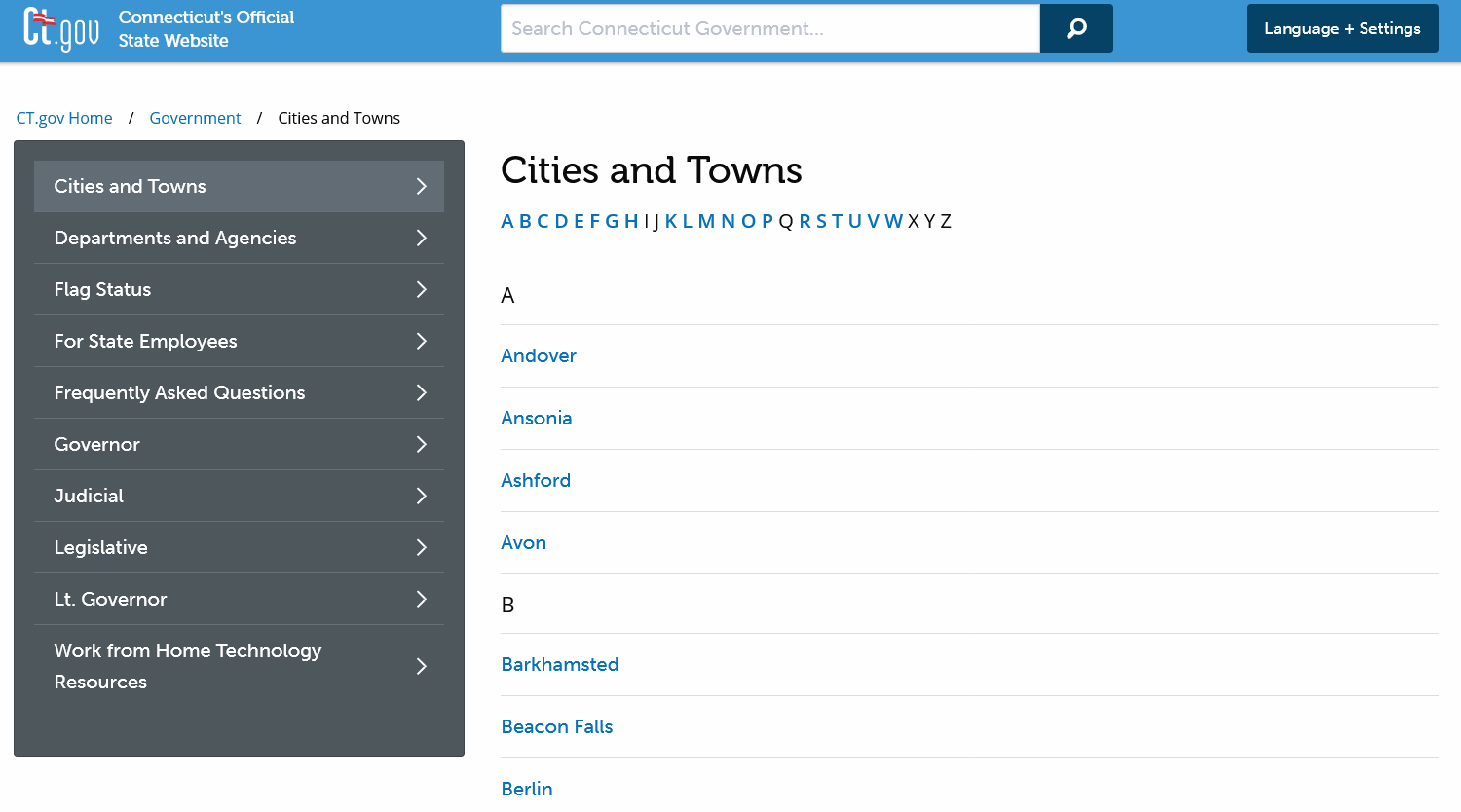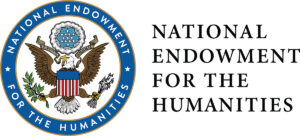Liberty Swift and Sally Whipple
The Connecticut Democracy Center at Connecticut’s Old State House
TEACHER'S SNAPSHOT
Topics:
Civic Engagement, Civics, Politics & Government
Town:
Statewide
Historical Background
In learning about the American Revolution and the U.S. Constitution, students in grades 3-5 easily relate to the colonists’ desire to be independent from the control of the British monarchy and King George. However, the democratic form of government established by the Constitution is not simple, and young people have little life experience to help them understand the many layers of our Constitutional democracy. These complexities make it challenging for students to think beyond the structure of the system and to see how government directly influences their personal lives.
A symposium of local government speakers gives young people a glimpse into the ways government touches their daily lives. Learning through the familiar context of their own lives, students begin to recognize services that are (or are not) provided by their local government. This real-life context enriches the grade 3 study of local government and the grade 5 study of early U.S. History, and that history enriches their understanding of the world around them today.
D1: Potential Compelling Question
D1: POTENTIAL SUPPORTING QUESTIONS
- What services does my town government provide?
- Who are the people who work in local government?
- How does their work help me?
D2: TOOL KIT
The following resources are for the teacher/symposium organizer.
In addition to the items provided, you will need photographs of local municipal buildings or properties in your town. Students will use these to spark ideas about who works in or maintains those places and, therefore, works in local government. Places might include town/city hall, library, police/fire department, a road or street, a park, a school or the board of education, etc. Collect photographs from the town website or take your own.

Symposium Planning Checklist for Teachers
This planning guide for teachers provides an overview and checklist for planning a local government symposium.

Links to Connecticut’s city and town websites from Connecticut’s Official State Website

“WebQuest: What Services Does My Town Provide?” worksheet
In this WebQuest, students read four problems and use their local government’s website to discover what services the town provides to address each problem.
D3: INQUIRY ACTIVITY
Planning and attending a local government symposium will help students answer the compelling question by learning about people who work in their local government and about their jobs. The symposium’s focus is on the people who carry out the work of local government, rather than just on elected officials, although these decision-makers can be included. The information shared with students will vary and will often be detailed and heartfelt. Even people who are not accustomed to public speaking can easily talk about their day at work and why their work is important.
The conversations and discussions before, during, and after the symposium will give students real-life insights into the role and work of government. Hearing about local government directly from those who do it will help them understand that “government is people” and that they can have access to people in the government.
1. Review compelling and supporting questions.
2. Use the Symposium Planning Checklist, Sample Speaker Invitation, and Sample Symposium Schedule provided in the Toolkit above to plan your Symposium with student input.
3. Talk to students about the different levels of government (local, state, and national) and ask them to name ways that government has an impact on their daily lives: stop signs, roads, schools, sanitation, public works, safety, parks, etc.
To begin thinking about who works in local government, students will examine photographs of municipal buildings or properties in their town. They will identify the building or property in each photograph and discuss who they think works at each place. You can correct misconceptions and strengthen their ability to determine who may or may not work for the government. Consider expanding your scope to include state and national examples in order to introduce or reinforce the levels of government. Using the images, talk to students about the basic functions of each place, the people they serve, and the people who work in them and develop a list of government activities that influence students’ lives.
- Local examples: libraries, schools, town or city halls, parks, town greens, transfer stations, road repair sites, and landfills.
- State examples: buildings or places in your area or in the capital city of Hartford. Important government buildings in Hartford include Connecticut’s State Capitol, Legislative Office Building, Supreme Court and State Library, Department of Transportation, etc.
- National examples: U.S. Capitol, White House, U.S. Supreme Court, interstate highways, National Parks.
4. Students will visit the State of Connecticut’s online list of Cities and Towns to find their local government’s website. Using the WebQuest worksheet, students will read four problems and use the website to discover services the city or town provides to address each problem. They will also reflect on why the town might provide these services. Students should focus on local government roles that are most familiar to them, such as libraries, parks and rec, animal control, public safety, and schools.
5. Introduce the concept of the local government symposium and explain that you will be inviting government employees to speak to the class about their jobs. Brainstorm a list of people who work in local government that the students want to meet and hear from during a symposium. Reference the Symposium Planning Checklist for Teachers for tips on planning and holding the symposium.
6. After speakers have been invited and confirmed, students will brainstorm questions they can ask the guests that will help them answer the compelling and supporting questions.
7. During the Symposium, students will take notes about the information shared by each speaker. They can use this sample note-taking page: DOC or PDF. You can also have students take notes in a Google Doc in Google Classroom or compile shared notes and additional information in a class Padlet (click HERE for a screenshot of a sample Padlet).
D4: COMMUNICATING CONCLUSIONS
- Students with a personal connection to a symposium speaker, or students who really enjoyed hearing from a particular speaker, can write a letter to the speaker after the event. They can use this sample thank you note assignment: DOC or PDF.
- Reflecting on the compelling question of “How Does Government Touch My Life?” students will choose one of the speakers from their local government, describe their job and place of work, and explain one specific thing the person does that directly touches their life. You can find a sample assignment and rubric here: DOC or PDF.
- Students will choose which of the government jobs they have been introduced to they would like to do most and write about why.
ADDITIONAL RESOURCES
Places to GO
Connecticut’s Old State House, Hartford: Located in the heart of Hartford, Connecticut’s Old State House served as a home to all three branches of Connecticut state government from 1796 to 1878. Some of our state’s most important stories of freedom, democracy, and civic action—from the Amistad and Prudence Crandall trials to the Constitutional Convention of 1818—took place at this National Historic Landmark. Students can visit with their families for a public tour, or classes can participate in virtual or in-person school programs.
Connecticut State Capitol Tours, Hartford: The current State Capitol has been in use since 1878. The building and adjoining Legislative Office Building boast the chambers where our elected officials meet and conduct the business of the state. The League of Women Voters provides guided tours for the public and school groups. The public can also visit for self-guided tours.
Things To DO
Find a book to read to your students or one for them to read independently in the Kid Governor® Library. The Library is a curated list of civics books that enable you to link reading and civics. The books are organized into three topic areas: Government, Elections & Voting; Leadership; and Civic Engagement.
Read another great book: Local Government in Connecticut, Third Edition by Frank B. Connolly. Wesleyan University Press, 2013.
Watch a video: Connecticut’s Old State House Conversations at Noon Series: Connecticut’s Local Government
Websites to VISIT
Connecticut’s Kid Governor®. Download the free Toolkits for lessons and activities about the three branches of state government and how they work, voting, leadership, identifying important community issues, and taking civic action. The resources are geared towards fifth graders but can be modified for younger students.
Kid Governor®: Student Action Resource Center. Tools and resources that guide kids from identifying community issues to taking informed civic action.
Kid Governor®: Writing to Your Elected Officials
ConneCT Kids. Kid-friendly information about Connecticut history, government, and more.
Connecticut General Assembly’s Find Your Legislators tool
USA.gov’s How to Contact Your Elected Officials
State, Local, and Tribal Governments | USAGov
State and Local Governments | iCivics
Connecticut General Assembly’s Bill Information Search. Search for current and past proposed state legislation. Navigating this tool will require teacher assistance!
Kids in the House: Young Learners. Information, lessons, and activities about the role, history, and Members of the U.S. House of Representatives.



